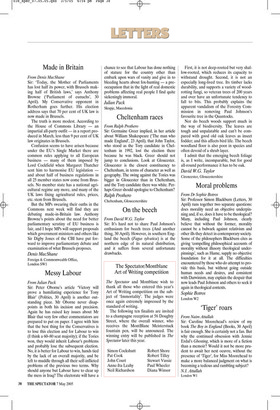On the beech
From David W.G. Taylor Sir: It’s hard not to share Paul Johnson’s enthusiasm for beech trees (And another thing, 30 April). However, in southern England the beech (Fagus sylvatica) is at the northern edge of its natural distribution, and it suffers from several unfortunate drawbacks. First, it is not deep-rooted but very shallow-rooted, which reduces its capacity to withstand drought. Second, it is not an especially long-lived tree. Its timber lacks durability, and supports a variety of woodrotting fungi, so veteran trees of 200 years and over have an unfortunate tendency to fall to bits. This probably explains the apparent vandalism of the Forestry Commission in removing Paul Johnson’s favourite tree in the Quantocks.
Nor do beech woods support much in the way of biodiversity. The leaves are tough and unpalatable and can’t be compared with good old oak leaves as insect fodder; and this affects bird life. The beech woodland floor is also poor in species and often devoid of a shrub layer.
I admit that the emerging beech foliage is, as I write, incomparable, but for good all-round performance it has to be oak.
David W.G. Taylor
Cirencester, Gloucestershire



























































 Previous page
Previous page